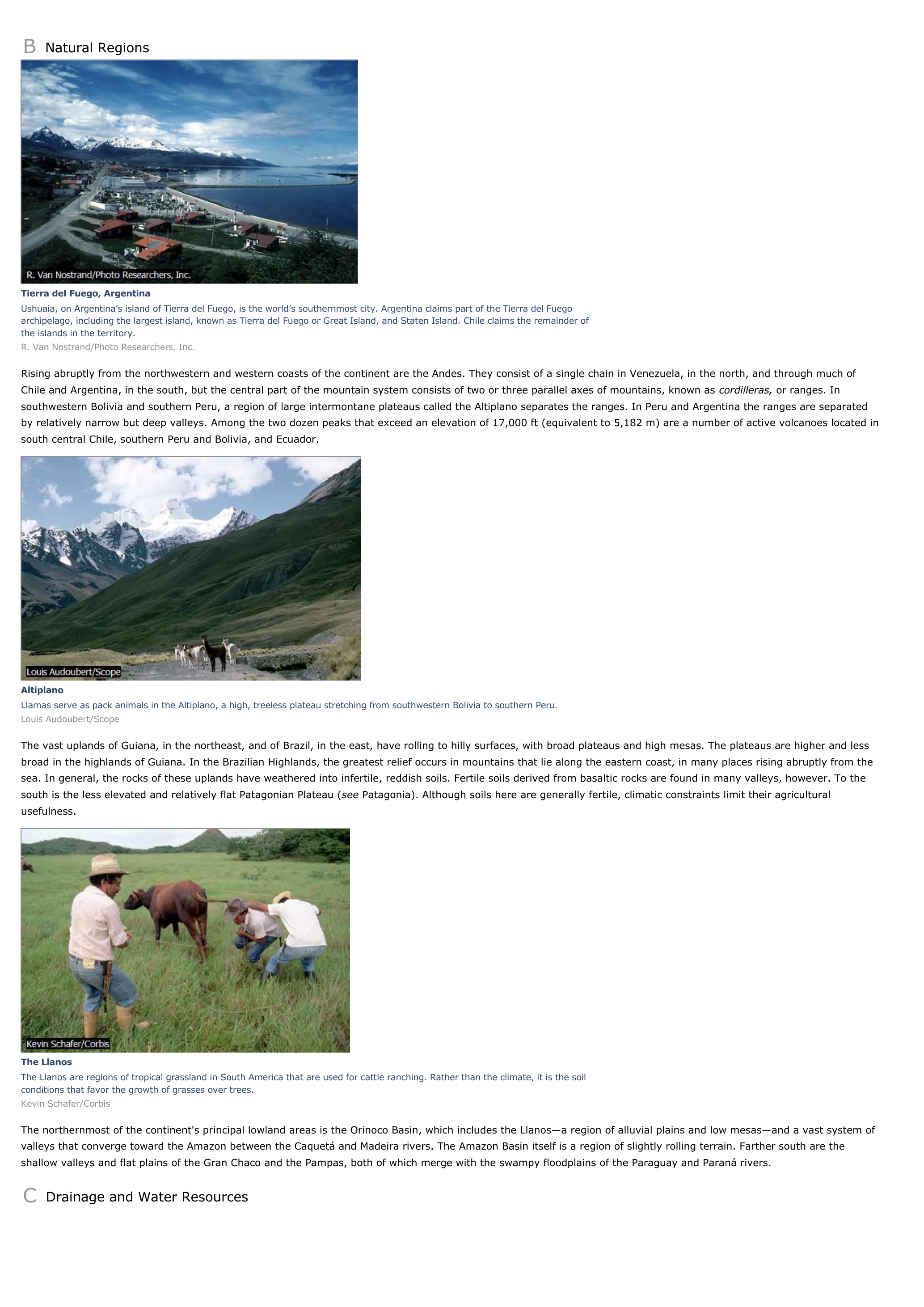South America - geography.
Publié le 26/05/2013

Extrait du document
«
B Natural Regions
Tierra del Fuego, ArgentinaUshuaia, on Argentina’s island of Tierra del Fuego, is the world’s southernmost city.
Argentina claims part of the Tierra del Fuegoarchipelago, including the largest island, known as Tierra del Fuego or Great Island, and Staten Island.
Chile claims the remainder ofthe islands in the territory.R.
Van Nostrand/Photo Researchers, Inc.
Rising abruptly from the northwestern and western coasts of the continent are the Andes.
They consist of a single chain in Venezuela, in the north, and through much ofChile and Argentina, in the south, but the central part of the mountain system consists of two or three parallel axes of mountains, known as cordilleras, or ranges.
In southwestern Bolivia and southern Peru, a region of large intermontane plateaus called the Altiplano separates the ranges.
In Peru and Argentina the ranges are separatedby relatively narrow but deep valleys.
Among the two dozen peaks that exceed an elevation of 17,000 ft (equivalent to 5,182 m) are a number of active volcanoes located insouth central Chile, southern Peru and Bolivia, and Ecuador.
AltiplanoLlamas serve as pack animals in the Altiplano, a high, treeless plateau stretching from southwestern Bolivia to southern Peru.Louis Audoubert/Scope
The vast uplands of Guiana, in the northeast, and of Brazil, in the east, have rolling to hilly surfaces, with broad plateaus and high mesas.
The plateaus are higher and lessbroad in the highlands of Guiana.
In the Brazilian Highlands, the greatest relief occurs in mountains that lie along the eastern coast, in many places rising abruptly from thesea.
In general, the rocks of these uplands have weathered into infertile, reddish soils.
Fertile soils derived from basaltic rocks are found in many valleys, however.
To thesouth is the less elevated and relatively flat Patagonian Plateau ( see Patagonia).
Although soils here are generally fertile, climatic constraints limit their agricultural usefulness.
The LlanosThe Llanos are regions of tropical grassland in South America that are used for cattle ranching.
Rather than the climate, it is the soilconditions that favor the growth of grasses over trees.Kevin Schafer/Corbis
The northernmost of the continent's principal lowland areas is the Orinoco Basin, which includes the Llanos—a region of alluvial plains and low mesas—and a vast system ofvalleys that converge toward the Amazon between the Caquetá and Madeira rivers.
The Amazon Basin itself is a region of slightly rolling terrain.
Farther south are theshallow valleys and flat plains of the Gran Chaco and the Pampas, both of which merge with the swampy floodplains of the Paraguay and Paraná rivers.
C Drainage and Water Resources.
»
↓↓↓ APERÇU DU DOCUMENT ↓↓↓
Liens utiles
- South America - Geography.
- Religions of South America - geography.
- South America: Earth at Night - geography.
- Tropical South America - geography.
- Horn of South America - geography.

































